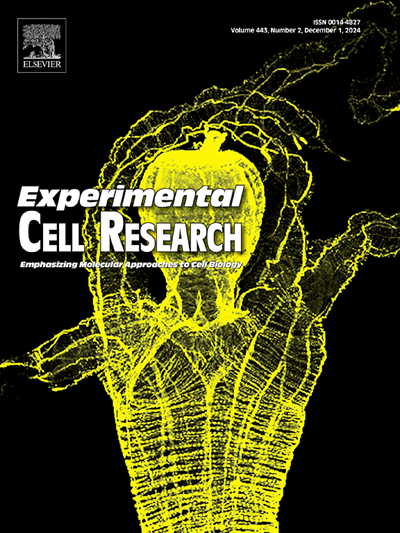Allograft inflammatory Factor-1 induces the dedifferentiation of Vascular Smooth Muscle cells into a macrophage-like phenotype both in vivo and in vitro
IF 3.3
3区 生物学
Q3 CELL BIOLOGY
引用次数: 0
Abstract
Atherosclerosis, a chronic lipid-driven vascular inflammatory disease involving multiple cell types, is the primary cause of cardiovascular disease-related morbidity and mortality. Allograft inflammatory factor 1 (AIF-1) contributes to atherosclerosis development by affecting vascular smooth muscle cells (VSMCs). Increasing research indicates that VSMCs are pivotal in atherosclerosis progression, particularly in macrophage-like phenotypic switching, though the mechanism of AIF-1 VSMCs phenotypic switching is not well understood. This study aims to correlate AIF-1 expression with atherosclerosis development and VSMCs phenotypic switching. AIF-1 was expressed in the atherosclerotic plaques of patients with carotid artery narrowing and atherosclerosis mice. AIF-1 was expressed in ox-LDL treated VSMCs and promoted the apoptosis of VSMCs. AIF-1 significantly influenced macrophage-like VSMC numbers through the AIF-1/NF-κB pathway, enhancing lipid uptake and TNF-α and IL-6 secretion. This study showed increased AIF-1 expression in atherosclerotic plaques in both patients with carotid stenosis and an atherosclerosis animal model. AIF-1 facilitated VSMC dedifferentiation into macrophage-like cells, enhancing lipid uptake and inflammatory factor release through the AIF-1/NF-κB pathway.
同种异体移植物炎症因子-1在体内和体外诱导血管平滑肌细胞去分化为巨噬细胞样表型。
动脉粥样硬化是一种慢性脂质驱动的血管炎症性疾病,涉及多种细胞类型,是心血管疾病相关发病率和死亡率的主要原因。同种异体移植物炎症因子1 (AIF-1)通过影响血管平滑肌细胞(VSMCs)参与动脉粥样硬化的发展。越来越多的研究表明,VSMCs在动脉粥样硬化的进展中起关键作用,特别是在巨噬细胞样表型转换中,尽管AIF-1 VSMCs表型转换的机制尚不清楚。本研究旨在探讨AIF-1表达与动脉粥样硬化发展和VSMCs表型转换的关系。AIF-1在颈动脉狭窄患者和动脉粥样硬化小鼠的动脉粥样硬化斑块中表达。AIF-1在ox-LDL处理的VSMCs中表达,促进VSMCs的凋亡。AIF-1通过AIF-1/NF-κB通路显著影响巨噬细胞样VSMC数量,增强脂质摄取和TNF-α、IL-6分泌。本研究显示,在颈动脉狭窄患者和动脉粥样硬化动物模型中,AIF-1在动脉粥样硬化斑块中的表达均增加。AIF-1促进VSMC去分化为巨噬细胞样细胞,通过AIF-1/NF-κB通路促进脂质摄取和炎症因子释放。
本文章由计算机程序翻译,如有差异,请以英文原文为准。
求助全文
约1分钟内获得全文
求助全文
来源期刊

Experimental cell research
医学-细胞生物学
CiteScore
7.20
自引率
0.00%
发文量
295
审稿时长
30 days
期刊介绍:
Our scope includes but is not limited to areas such as: Chromosome biology; Chromatin and epigenetics; DNA repair; Gene regulation; Nuclear import-export; RNA processing; Non-coding RNAs; Organelle biology; The cytoskeleton; Intracellular trafficking; Cell-cell and cell-matrix interactions; Cell motility and migration; Cell proliferation; Cellular differentiation; Signal transduction; Programmed cell death.
 求助内容:
求助内容: 应助结果提醒方式:
应助结果提醒方式:


